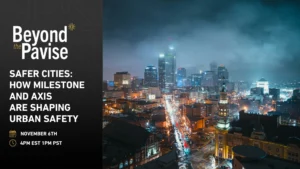How Drones Are Taking Over Fireworks Shows This July
Today, drones are being used in everything from agriculture to mining and exploration, from aerial surveillance to unmanned cargo transport, from law enforcement to storm tracking, and everything in between. While many have picked up UAV’s for their own recreational use, drones are also making a huge splash in entertainment. Many in the motion picture industry are using this technology for filming purposes, but lately, the drones themselves are featured as the star of the entertainment.
Whether it’s the thousands of drones that put on a pre-recorded light show that created thrilling images of a snowboarder and the iconic rings in the sky during the 2018 Winter Olympics opening ceremony in Pyeongchang, South Korea, or the multitudes of drones flickering over the skyline and transforming into a fluttering flag during Lady Gaga’s performance at the 2017 Super Bowl halftime show in Houston, drones are electrifying the entertainment industry.
However, it’s their latest endeavors in nighttime displays that are making them heroes to observers of all ages. Independence Day has long been celebrated nationwide with barbecues, family gatherings, and of course, fireworks. Yet in some places, whether it’s environmental concerns or deeper, personal issues, traditional fireworks can be considered hazardous.
The country’s western states are often subjected to droughts and high temperatures, making conditions ripe for wildfires, resulting in many cancelled fireworks displays over the past years. This year, however, rather than risk fiery explosions and drifting smoke, municipalities across the west were able to illuminate their holiday using drones equipped with LED lights. Multiple Arizona towns, including Carefree and Cave Creek, chose to hold light shows using drones. And in Aspen, Colorado, the city ditched fireworks in favor of a drone light display instead, lighting the sky with star like shapes and the American flag.
This year, the 4th of July had significant meaning for Travis Air Force Base in Northern California—the base was celebrating its 75th anniversary. In years past, families of the 10,000 active duty members on base were directed to celebrations in nearby towns due to climate conditions that made fireworks risky. Yet many families had to eschew these off-base festivities due to other concerns. More than 1,000 of the families based at Travis participate in the Exceptional Family Member Program, which offers additional support for active personnel who have dependents that require ongoing physical and psychological medical care. For many of these families, traveling is difficult due to the specific physical needs of their patient children. In addition, because fireworks are an extravaganza of sounds and colors, usually followed by a thunderous finale, children with psychological problems are often over overcome by the multi-sensory experience.
This year, base officials opted for a drone-powered light display in lieu of traditional fireworks. Unlike the jolting explosions typical with fireworks, drones make a buzzing sound that is less jarring to observers, yet the imagination is all that limits the visceral light show capable with drone choreography. The preprogrammed show at Travis included simulated fireworks, along with an amazing display of custom-crafted imagery, including a pixelated tribute to the KC-10 and C-17 aircraft that call Travis home.
Drone light shows are certainly not replacing their more volatile counterpart. However, their inclusivity cannot be denied—drones can be used where traditional fireworks have been forsaken, allowing for light shows in areas where environmental conditions make them too precarious and for those spectators that find conventional pyrotechnics too overwhelming to view. But there is another significant benefit to these skyline sensations—their reusability factor makes drones economically advantageous as well.









